Walking down Ludgate Hill the other day I grabbed this quick picture of St Bride’s because there were also some nice fluffy clouds in the frame …
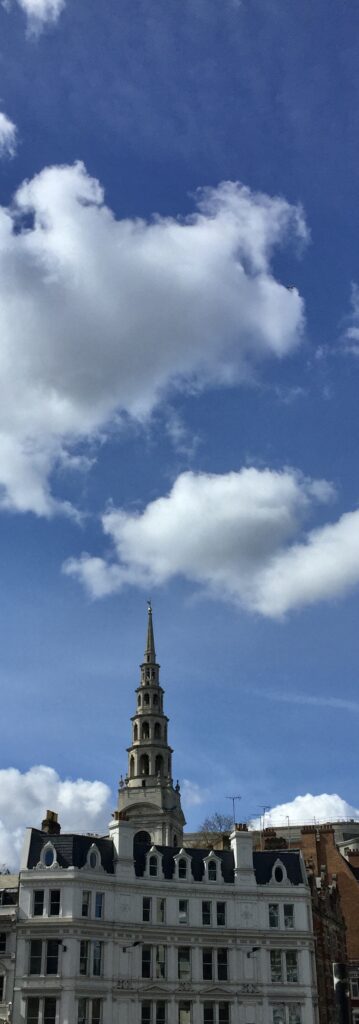
It occurred to me then that the church, with its famous ‘wedding cake’ steeple, had been extremely fortunate not to be now obscured by the extensive post-war development that took place in the City as it very gradually recovered from the War. Someone working in the City at the turn of the 20th century would have recognised both the church and the building in front of it.
This sent me in search of some other images. Here’s the view from a bit further up Ludgate Hill …
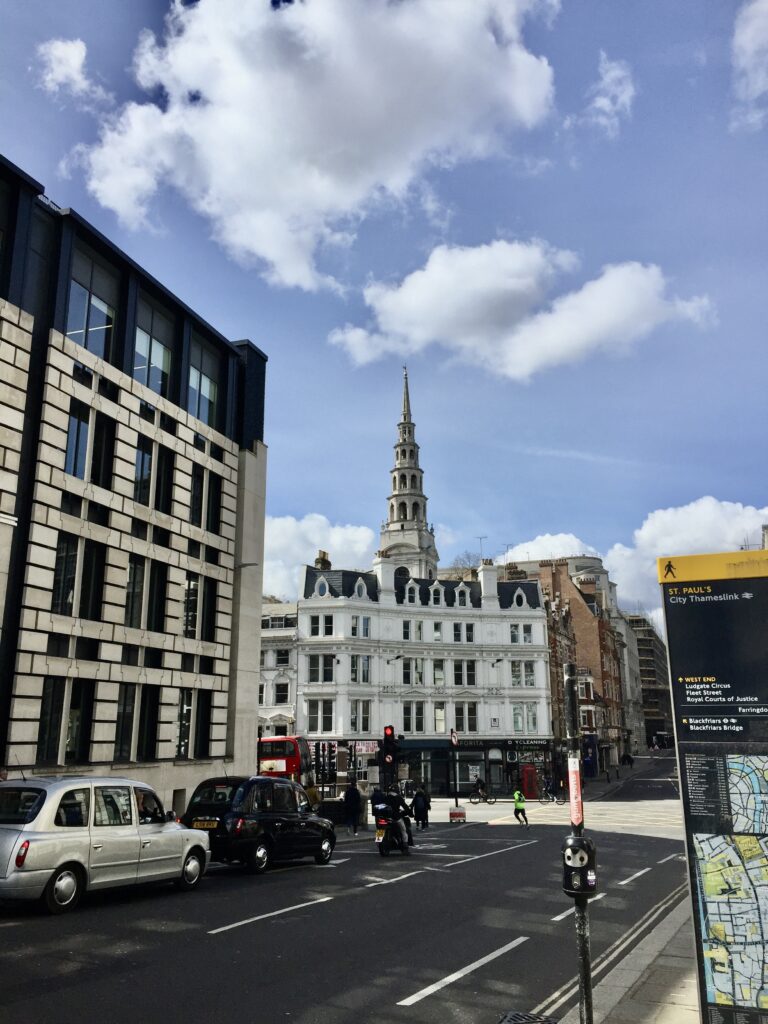
Here is a view from the hill in the 1940s from a postcard series called London Under Fire …

I decided to visit St Bride’s again taking this picture as I approached the entrance door …
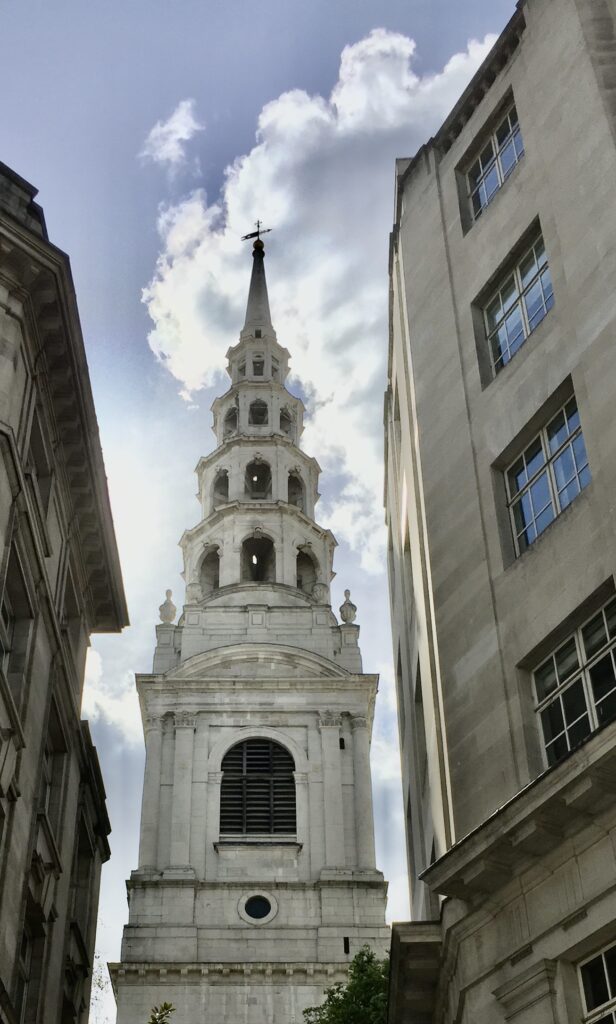
The church is surrounded by buildings so this print from 1753 is interesting since one can get a sense of its full scale as seen from the outside and its position relative to St Paul’s Cathedral …
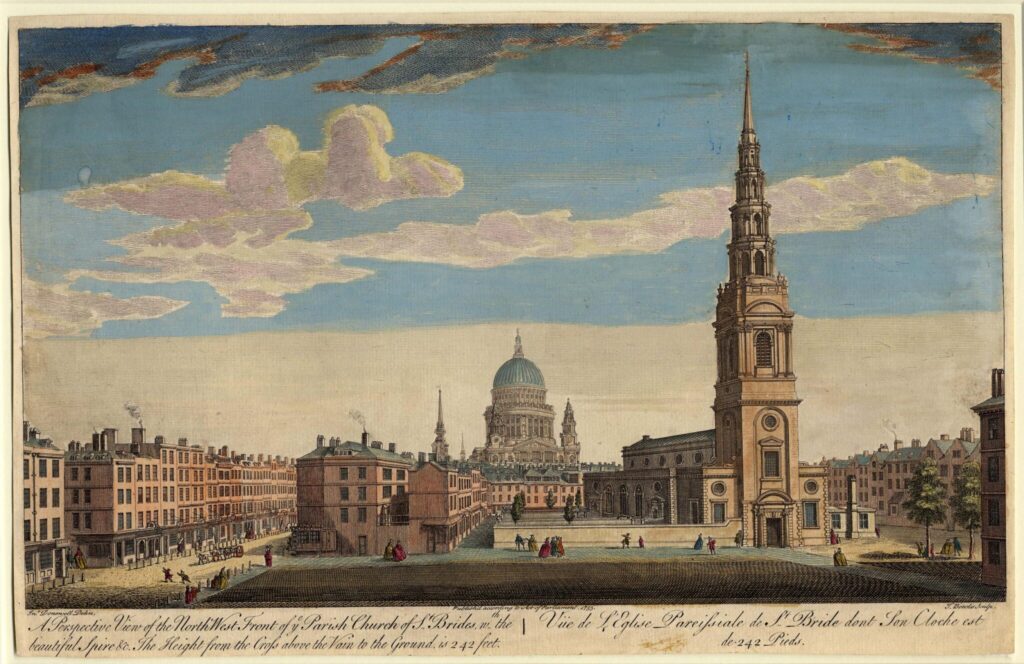
I crossed St Bride’s Avenue, a narrow passageway that runs between the church and the buildings on the southern side of Fleet Street …

This is the view from the east end. The Old bell Tavern dates from the 1670s …

The church was gutted in the Blitz but was very sympathetically restored and reopened in 1957. Here are the ruins shortly after the bombing …
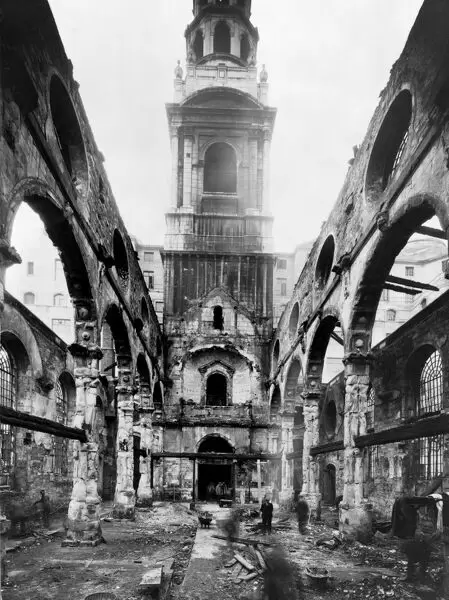
The interior we see today is loyal to Wren’s core design. Everything, however, including floor, all wooden structures, roof etc. is from the 1950s and later refurbishments …
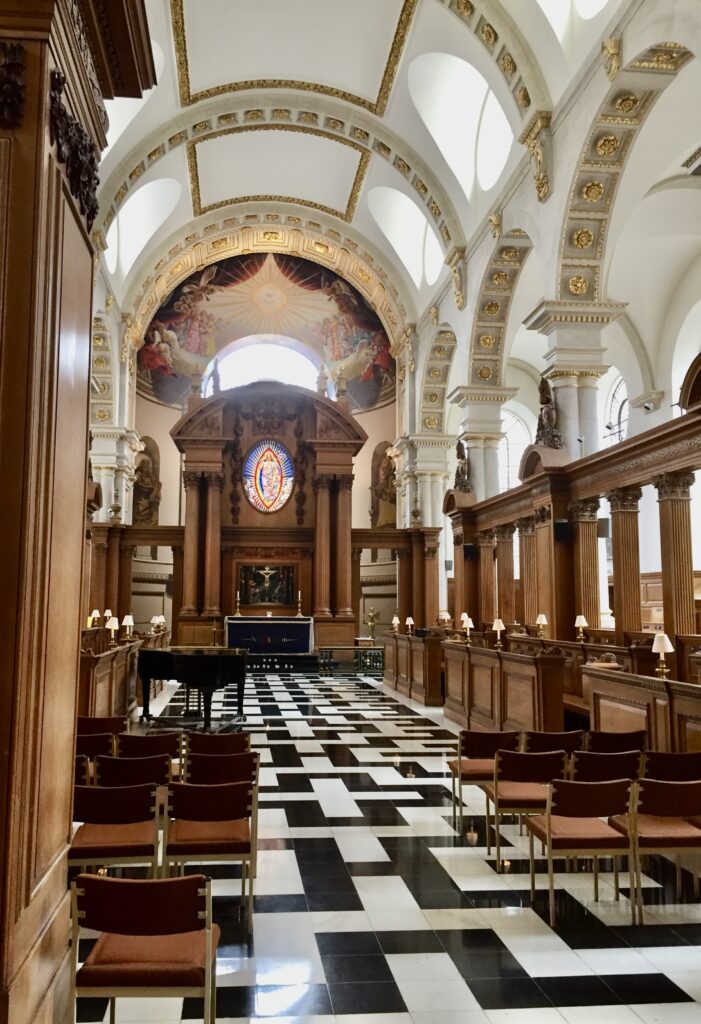
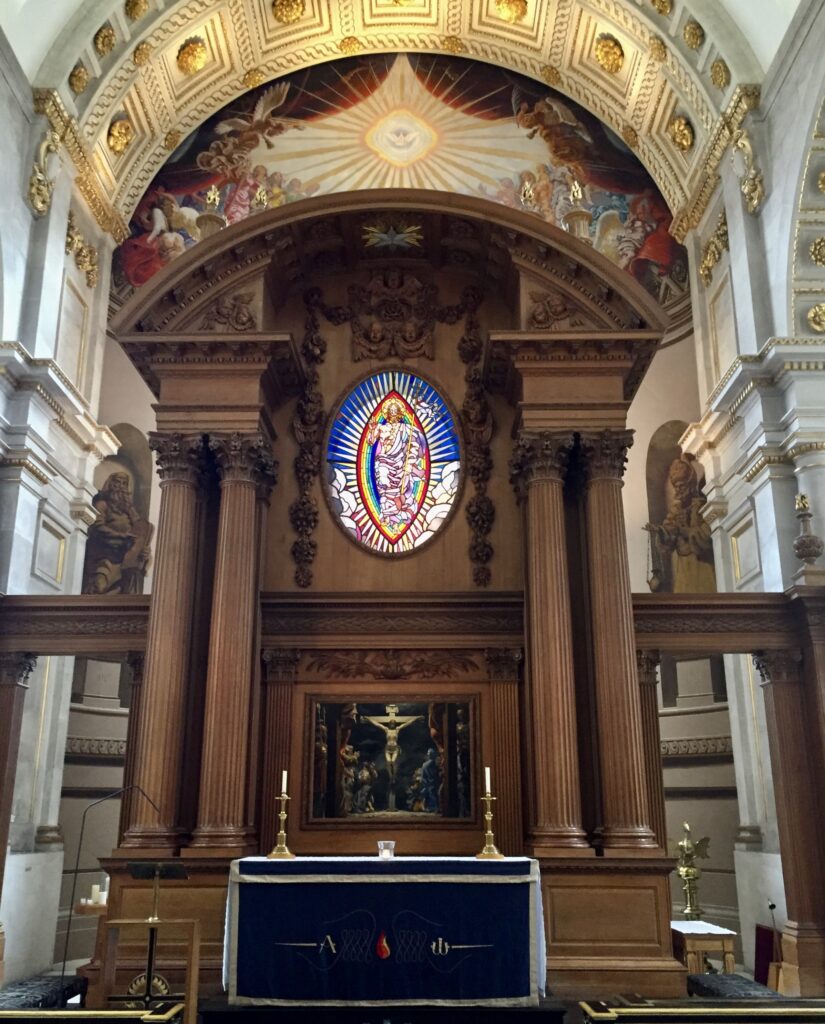
Looking west, St Bride is commemorated in the statue on the left …
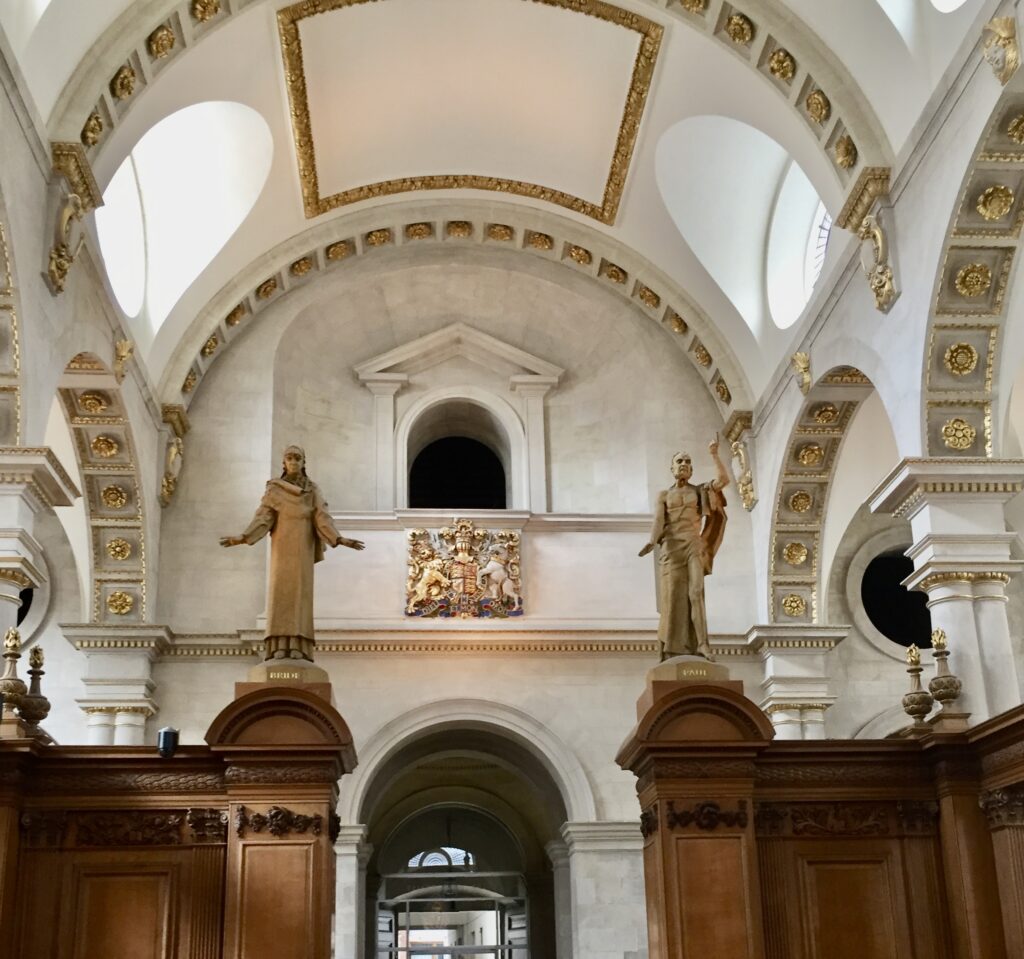
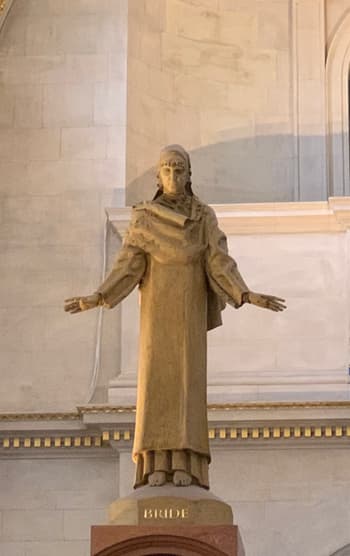
She was born in AD 453, a contemporary of St Patrick. The church’s association with St Bride (St Brigid of Kildare) may date back to the sixth century and is the only church on the east side of England to bear this dedication. She died on 1st February AD 525, and was buried with the remains of Ireland’s two other patron saints, Patrick and Columba. Her saint’s day continues to be celebrated on this date. You can read more about her and the church’s history here.
The royal arms weigh two tons and are carved from a block of Beer stone …

The eagle lectern was, according to tradition, rescued from the medieval church during the Great Fire of London in 1666 …
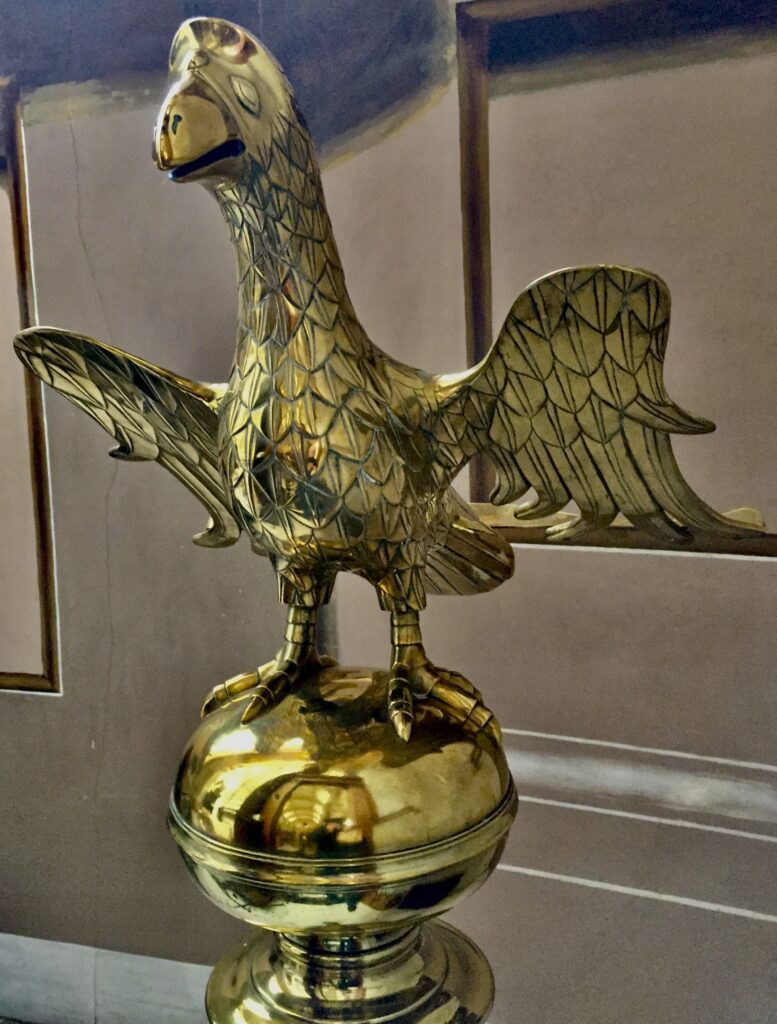
There are two ‘charity scholars’ tucked away in a corner . They originally stood outside St Bride’s Charity School in Bride’s Lane. …
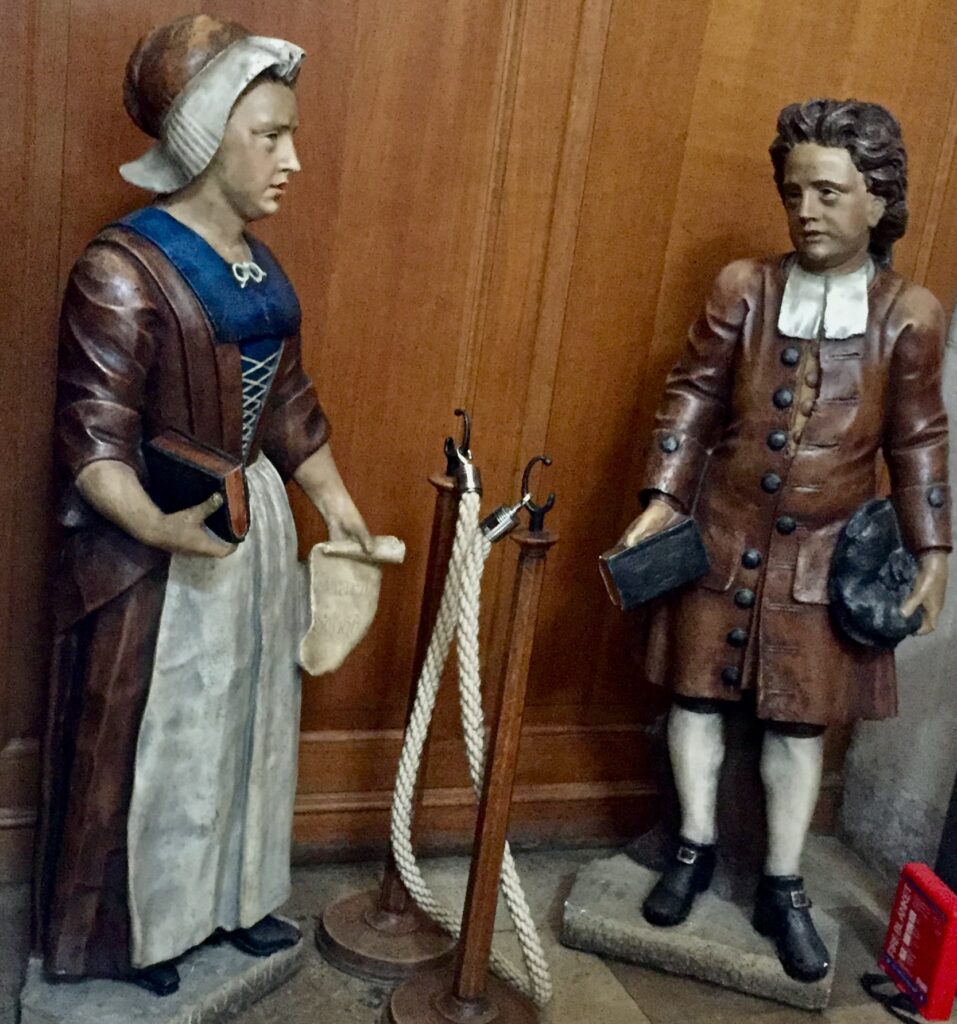
Just above their heads is a small bust carved by Clare Waterhouse, replacing an earlier marble carving by Marjorie Meggit …
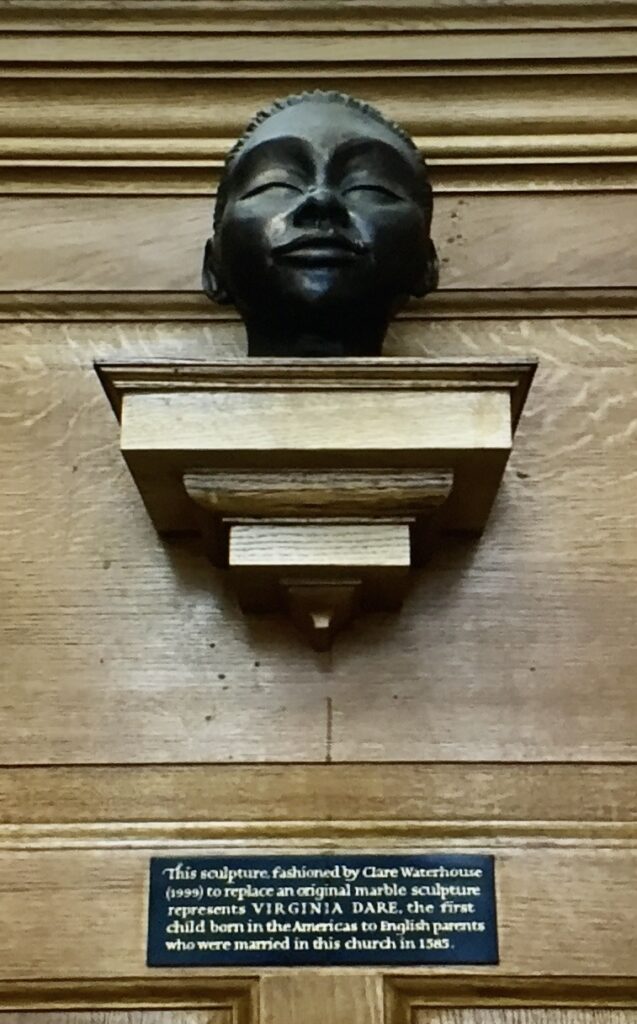
It represents Virginia Dare, the first recorded European child to be born in North America. Her parents had been married here before sailing to Roanoke in 1587 but what became of Virginia and the other colonists remains a mystery.
St Bride’s has a long association with the print trade and journalism, dating back to around 1500 when the printing press of Wynkyn de Worde was established near the church. This association grew with the rise of Fleet Street as a centre of journalism and the newspaper industry. There are a number of memorials to journalists killed, imprisoned or just missing in conflicts around the world and I have written more extensively about these in last week’s blog.
I headed downstairs to the fascinating museum in the crypt …
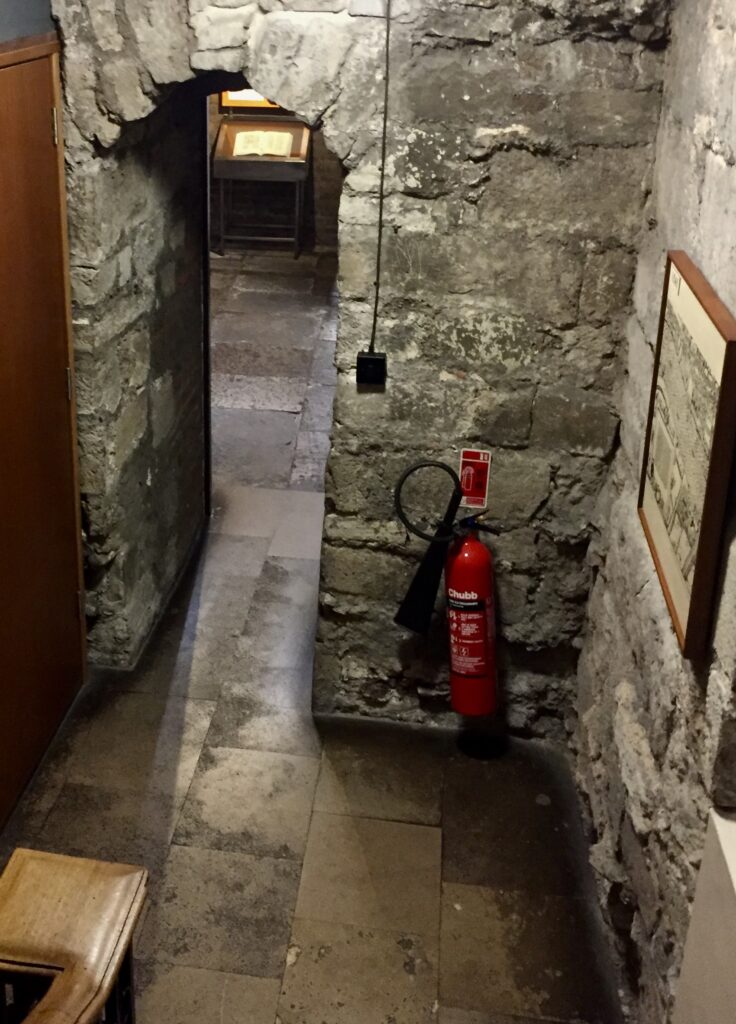
As I descended I remembered that the crowded burial chambers below the church were rediscovered by preparatory excavations in 1953. The crypts were found to contain the remains of 227 individually identified people interred since the 17th century, as well as an estimated 7000 human remains in the more communal charnel house, where bones removed from the cemetery during the Middle Ages (in order to make room for new burials) were arranged according to type (skulls with skulls, femurs with femurs, etc.) and laid out in a checkerboard pattern to an as-yet unknown depth …
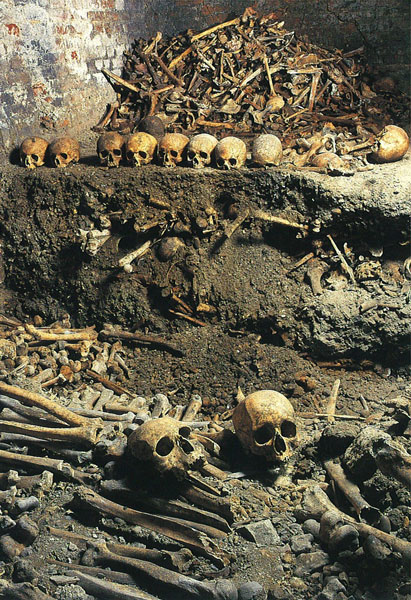
There are guided tours to see the charnel house but I’ve decided to pass on that for the time being.
And so to the museum.
Until well into the 18th century the only source of corpses for medical research was the public hangman and supply was never enough to satisfy demand. As a result, a market arose to satisfy the needs of medical students and doctors and this was filled by the activities of the so-called ‘resurrection men’ or ‘body snatchers’. Some churches built watchtowers for guards to protect the churchyard, but these were by no means always effective – earning between £8 and £14 a body, the snatchers had plenty of cash available for bribery purposes.
One answer was a coffin that would be extremely difficult to open and such an invention was patented by one Edward Bridgman of Goswell Road in 1818. It was made of iron with spring clips on the lid and the coffin on display fulfils the patent …
A contemporary advertisement – secure coffins were not cheap …
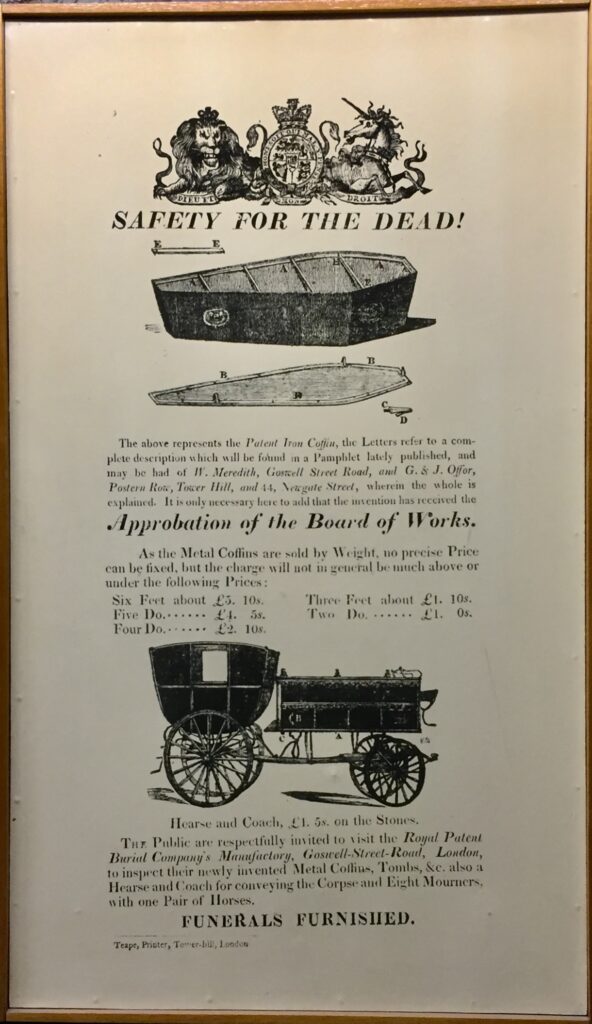
As a nearby information panel points out, the idea was not popular with the clergy and in 1820 the churchwardens at St Andrew’s Holborn refused churchyard burial to an iron coffin. The body was taken out and buried, which led to a law suit. The judgment was that such coffins could not be refused but, since they took so much longer than wooden ones to disintegrate, much higher fees could be charged. This no doubt contributed to the relatively short time iron coffining was used.
A collection of grave markers …
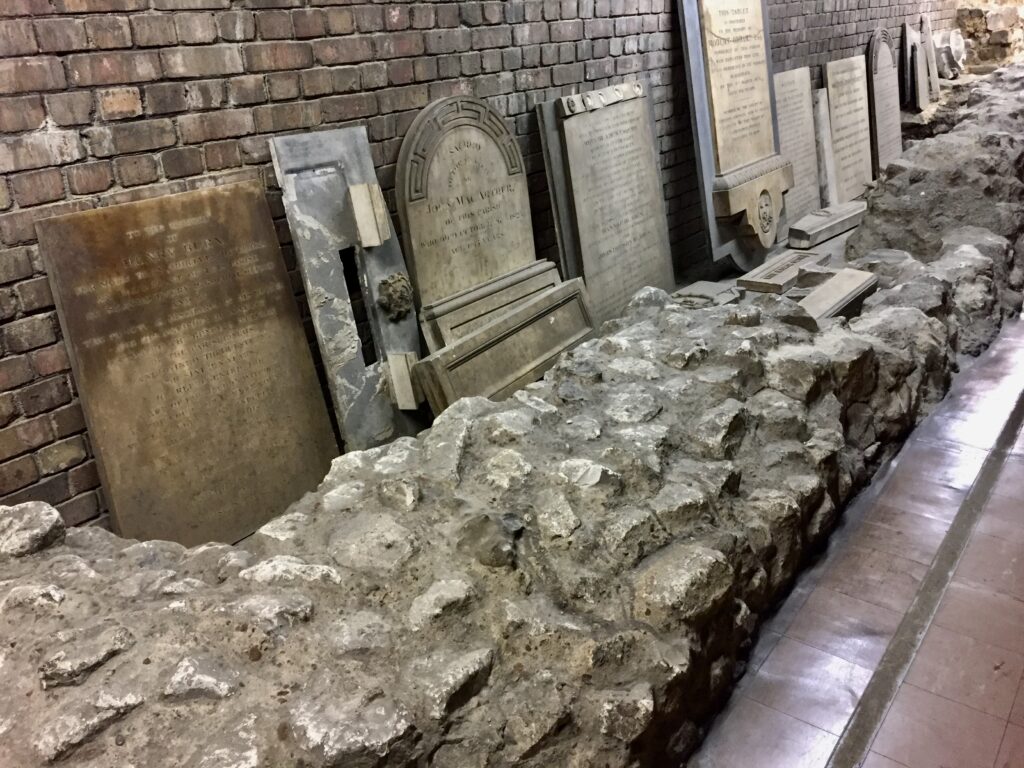
Early walls and foundations …
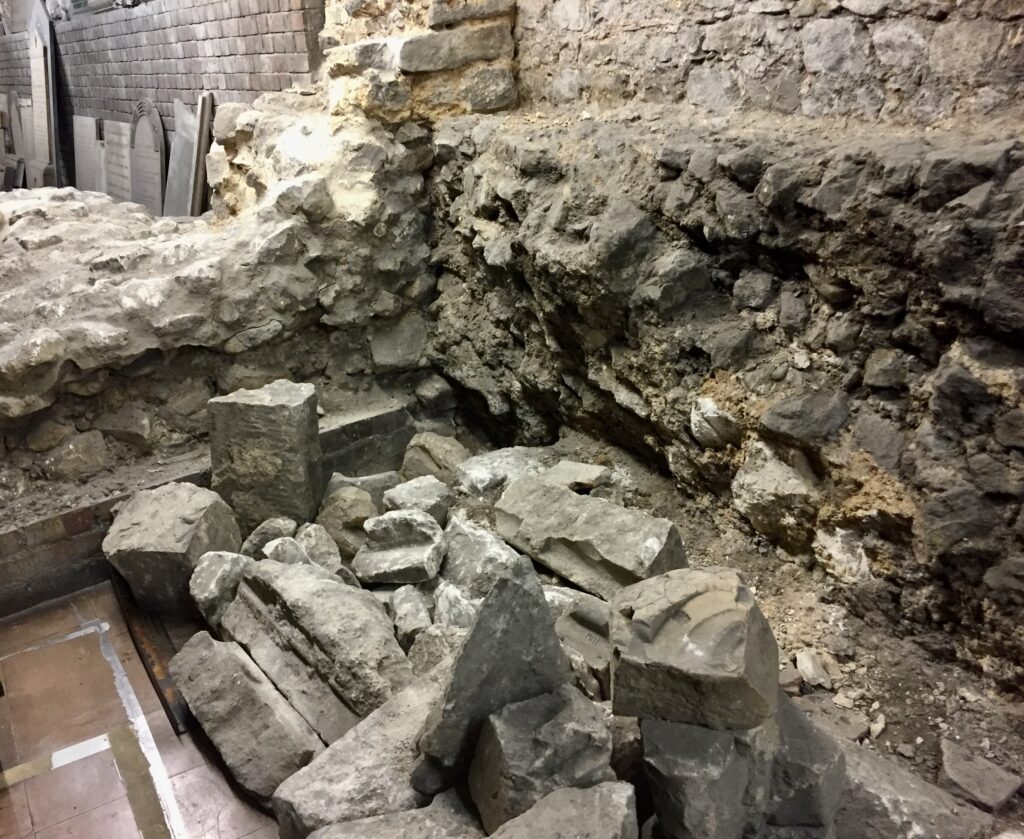
I think some of the explanatory panels are little works of art in their own right …
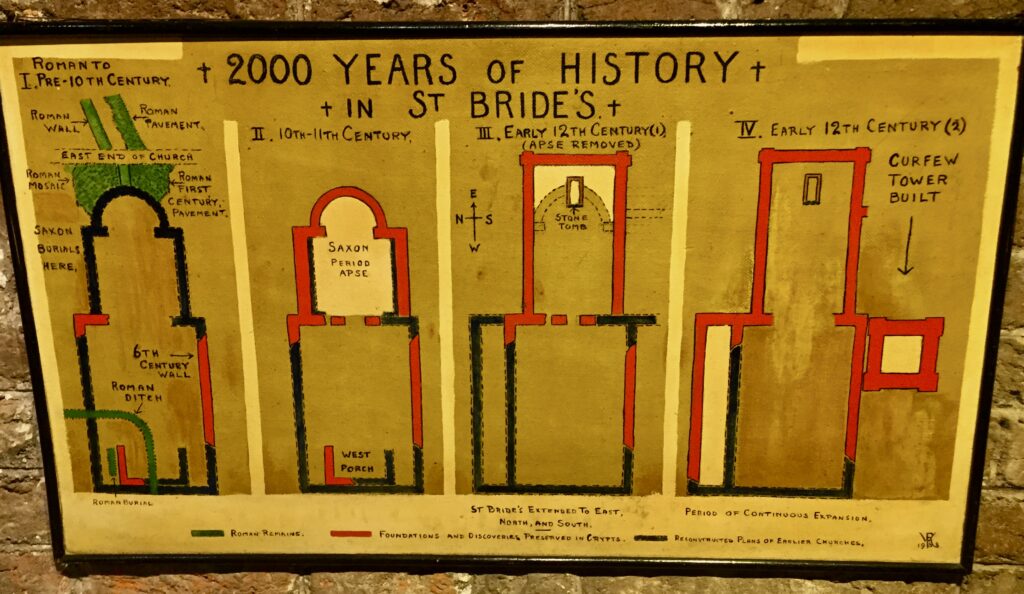
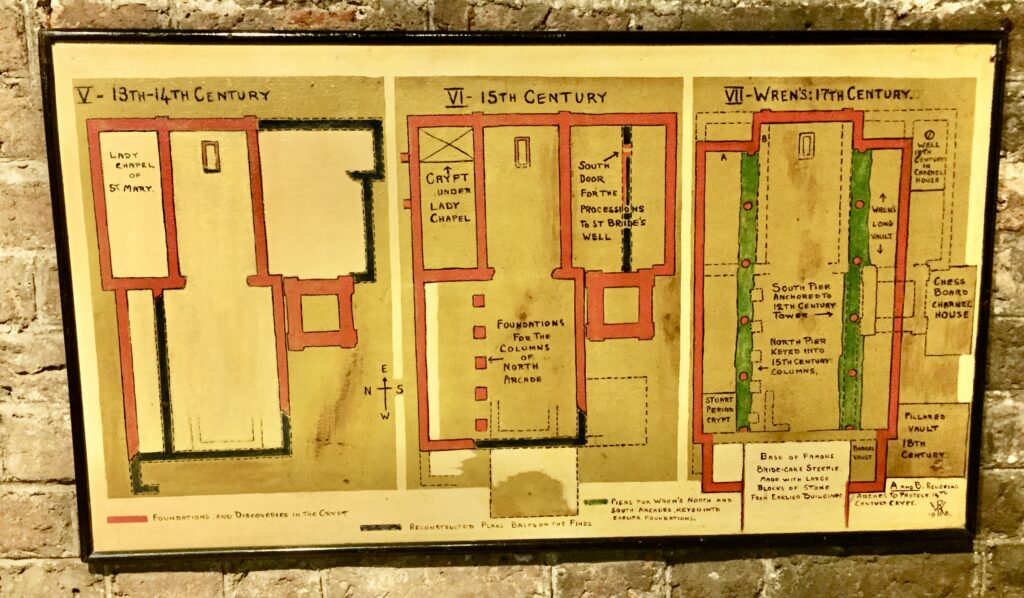
Terrifying times …
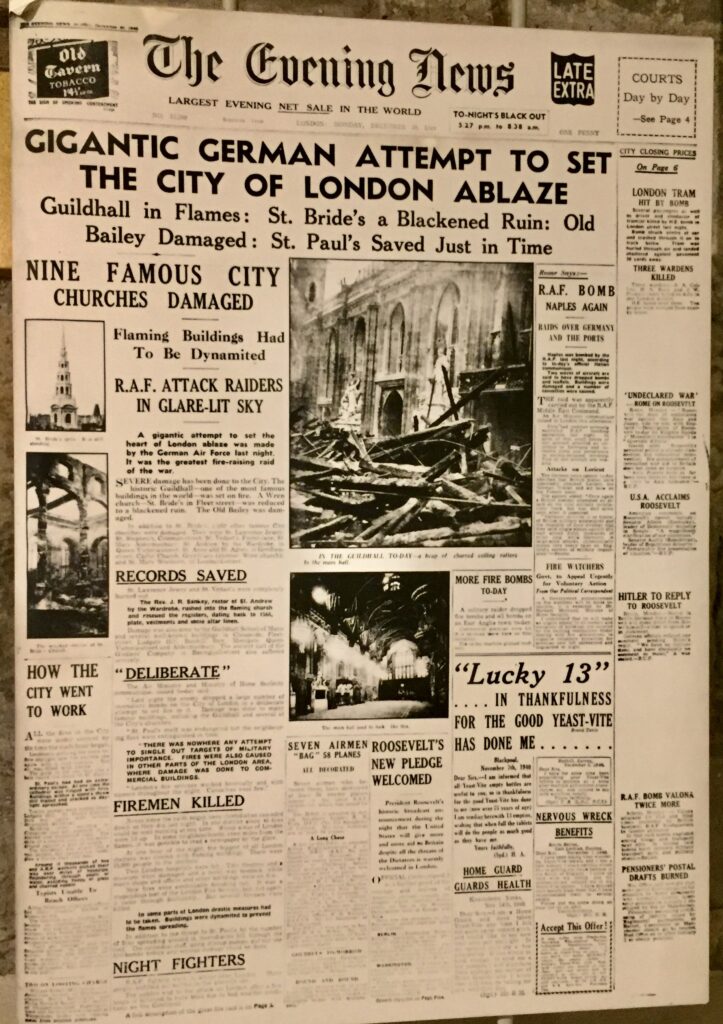
An amusing anecdote …
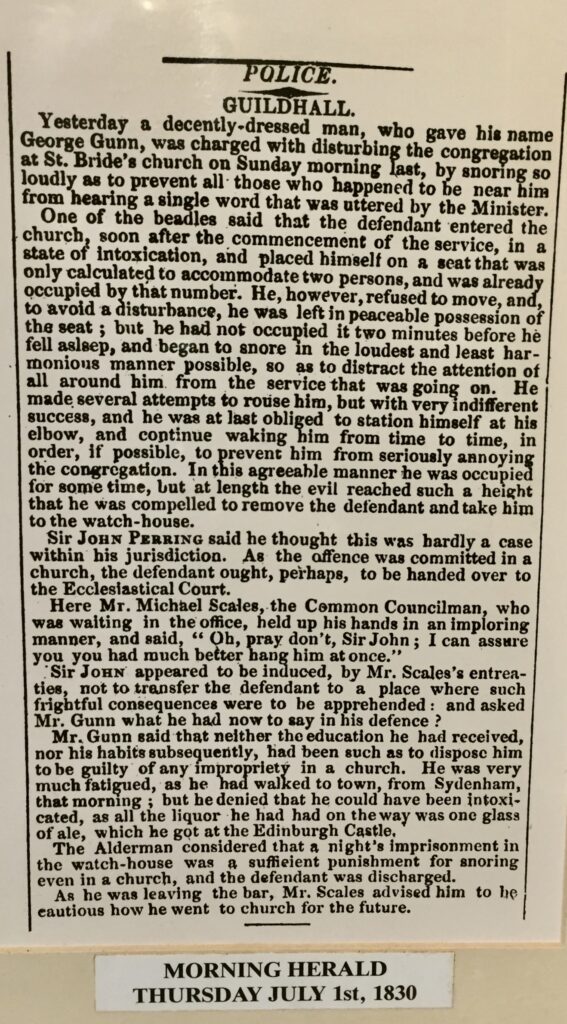
There are some interesting inscriptions at the east end of the church. 1702 was when the steeple was being completed …
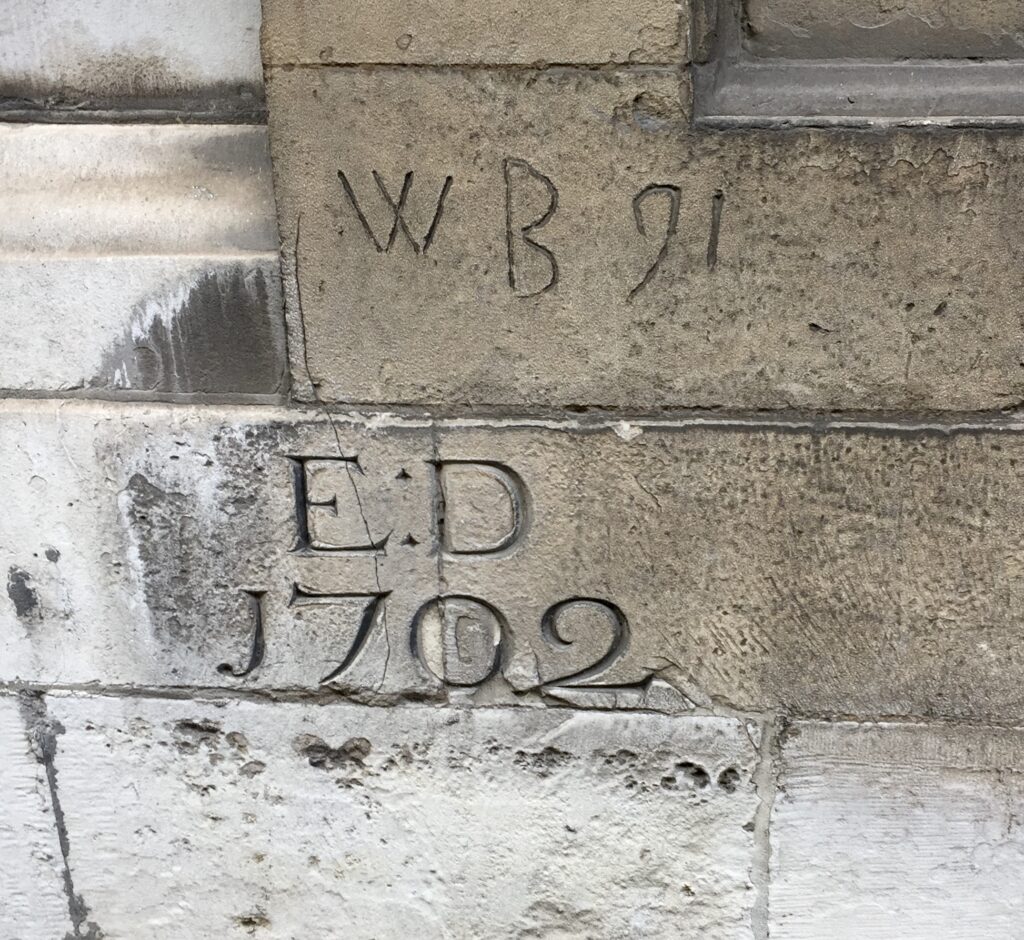
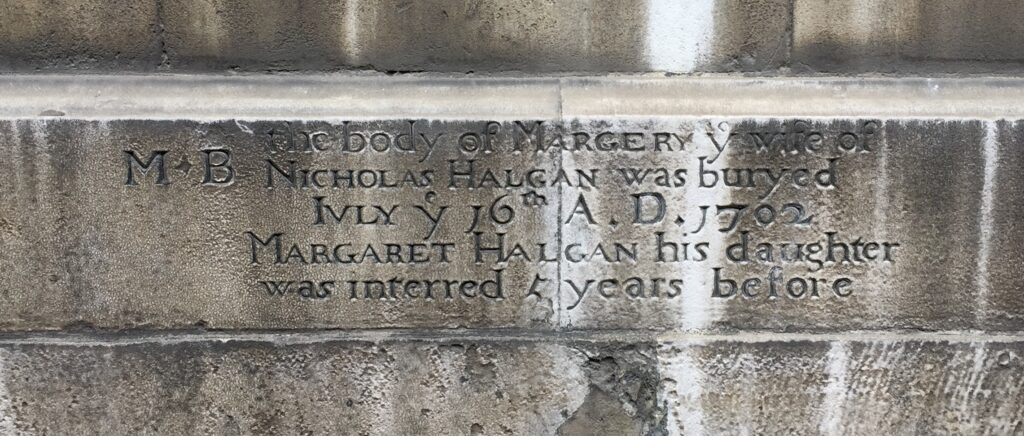
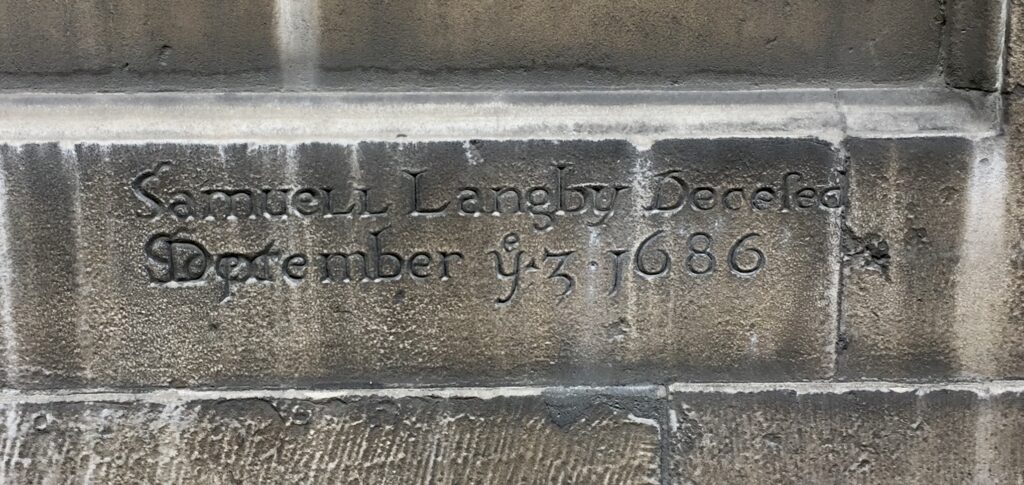
I hope you enjoyed today’s effort. I am indebted to the London Inheritance blog for some of the illustrations.
If you would like to follow me on Instagram here is the link …
